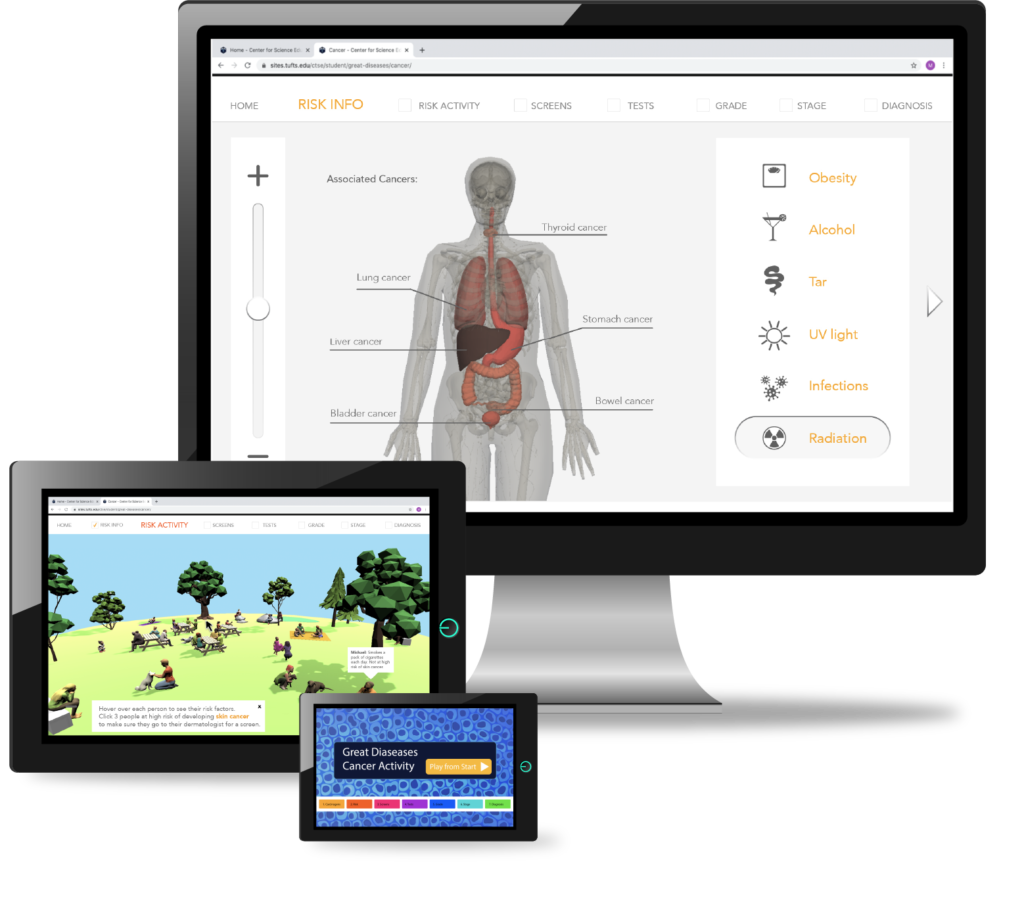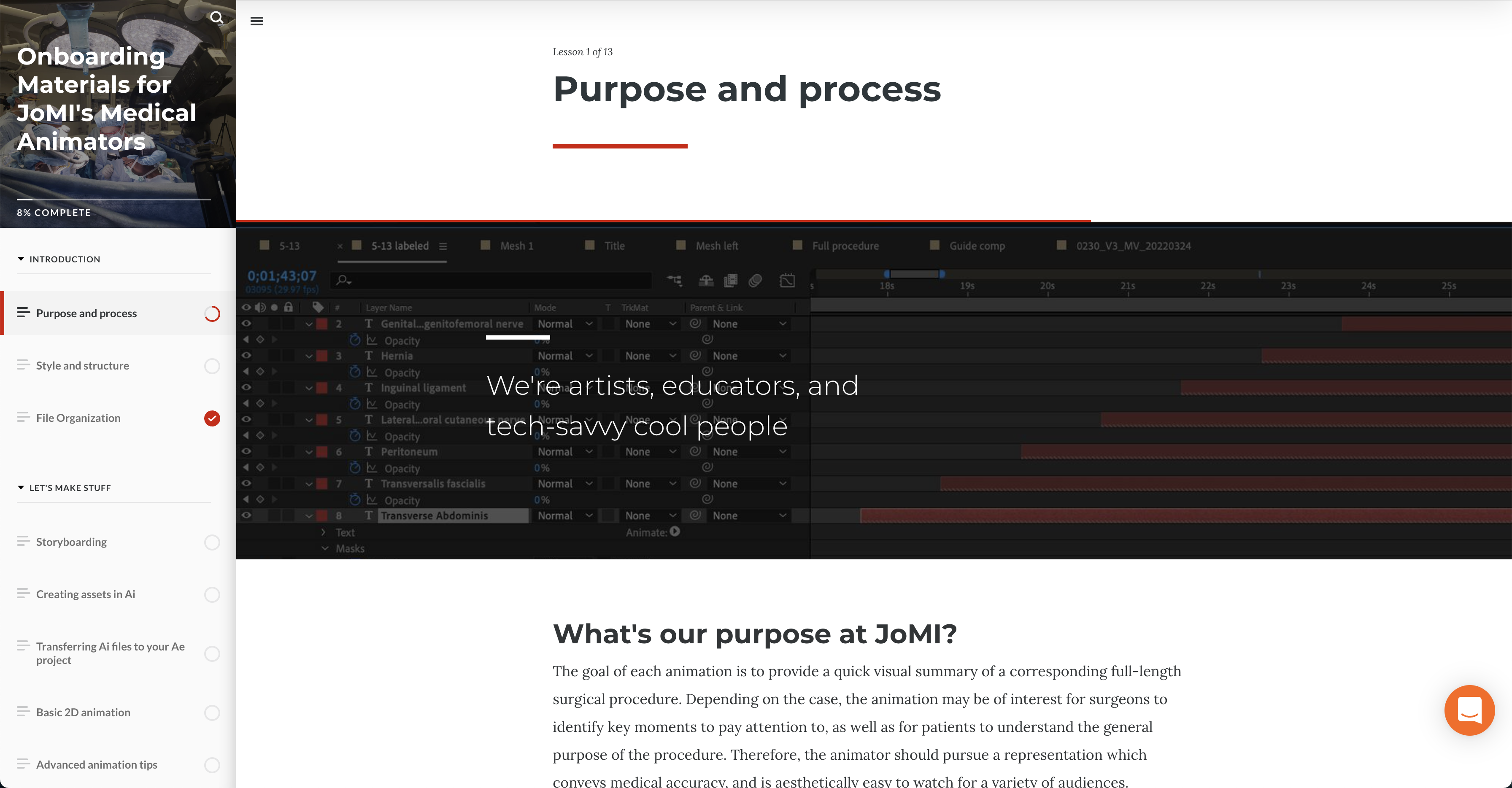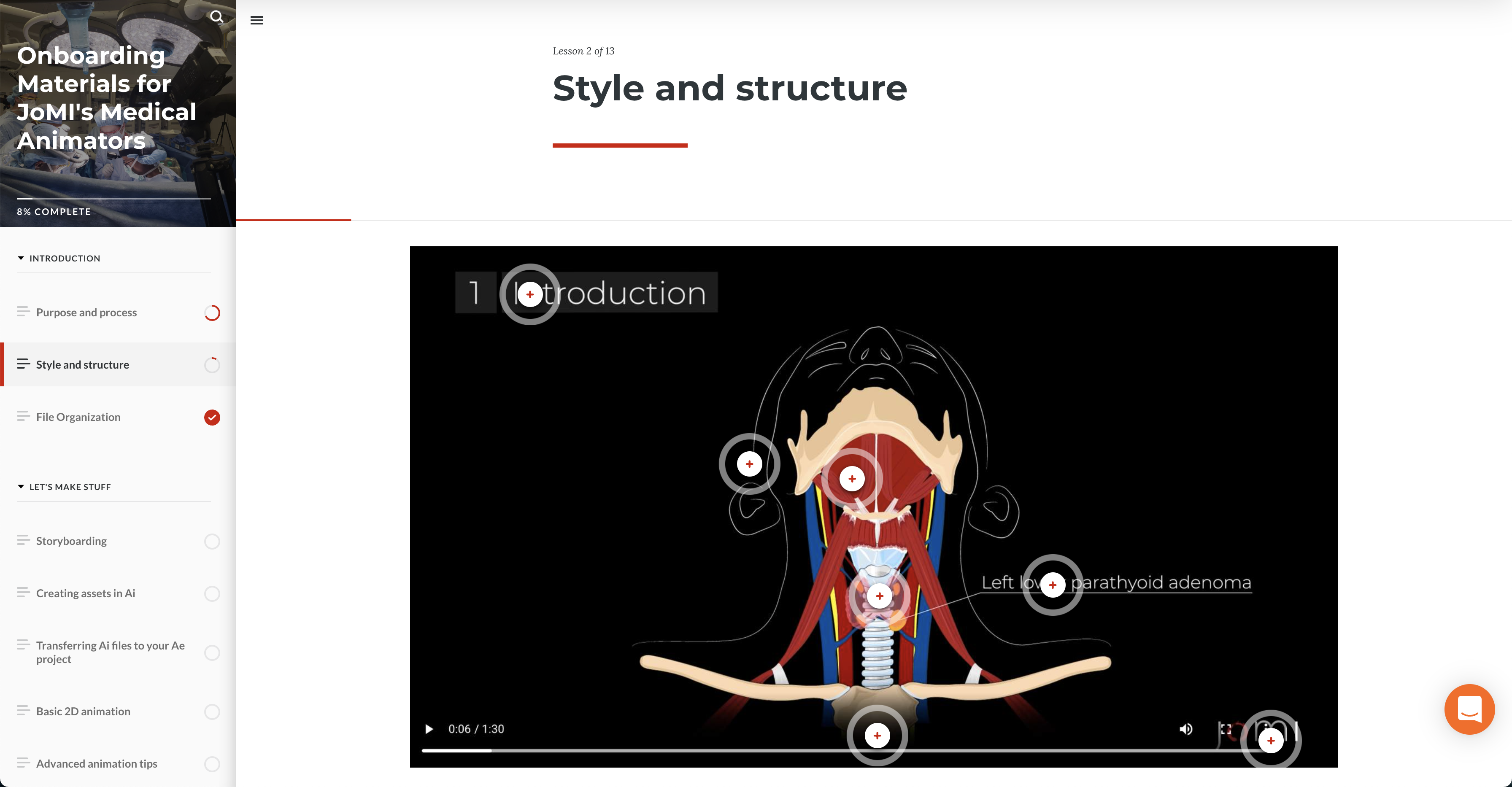During my time as the Medical Animation Department Head at the Journal of Medical Insight, I ensured the seamless onboarding of new hires by consolidating instructions for our style, software, and process into an online course. Backed by my experience in adult education design from Tufts, I organized content into approachable chapters to ensure each new hire’s successful preparation for our target audience of medical students and healthcare professionals. The course was created in Articulate Rise.
A seven-module simulation created in Unity, 3dsMax, and Adobe AfterEffects for Tufts University School of Medicine’s high school outreach initiatives.
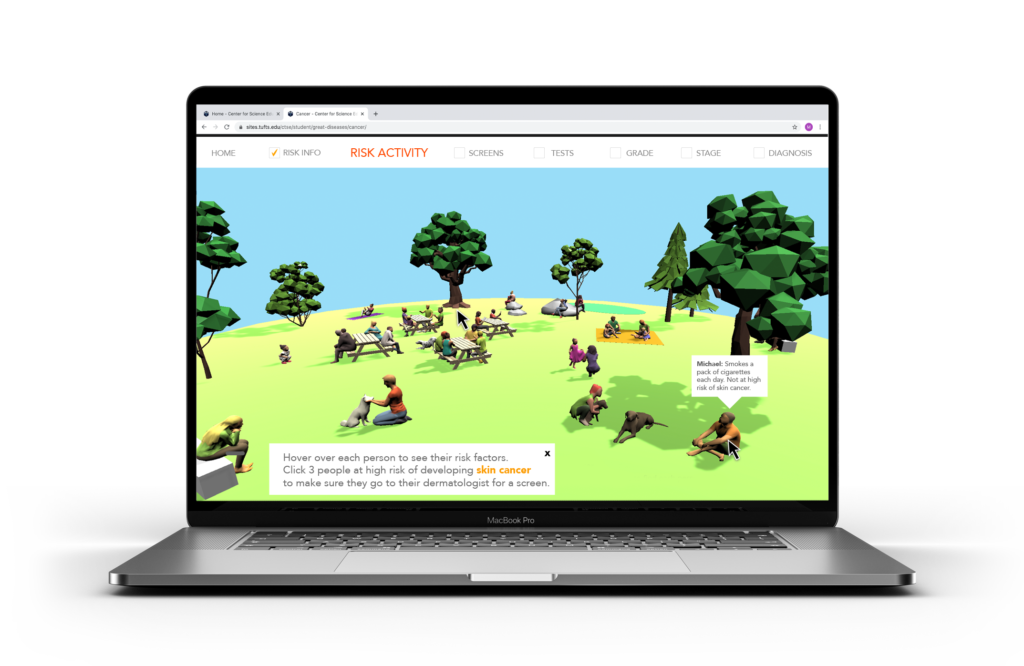
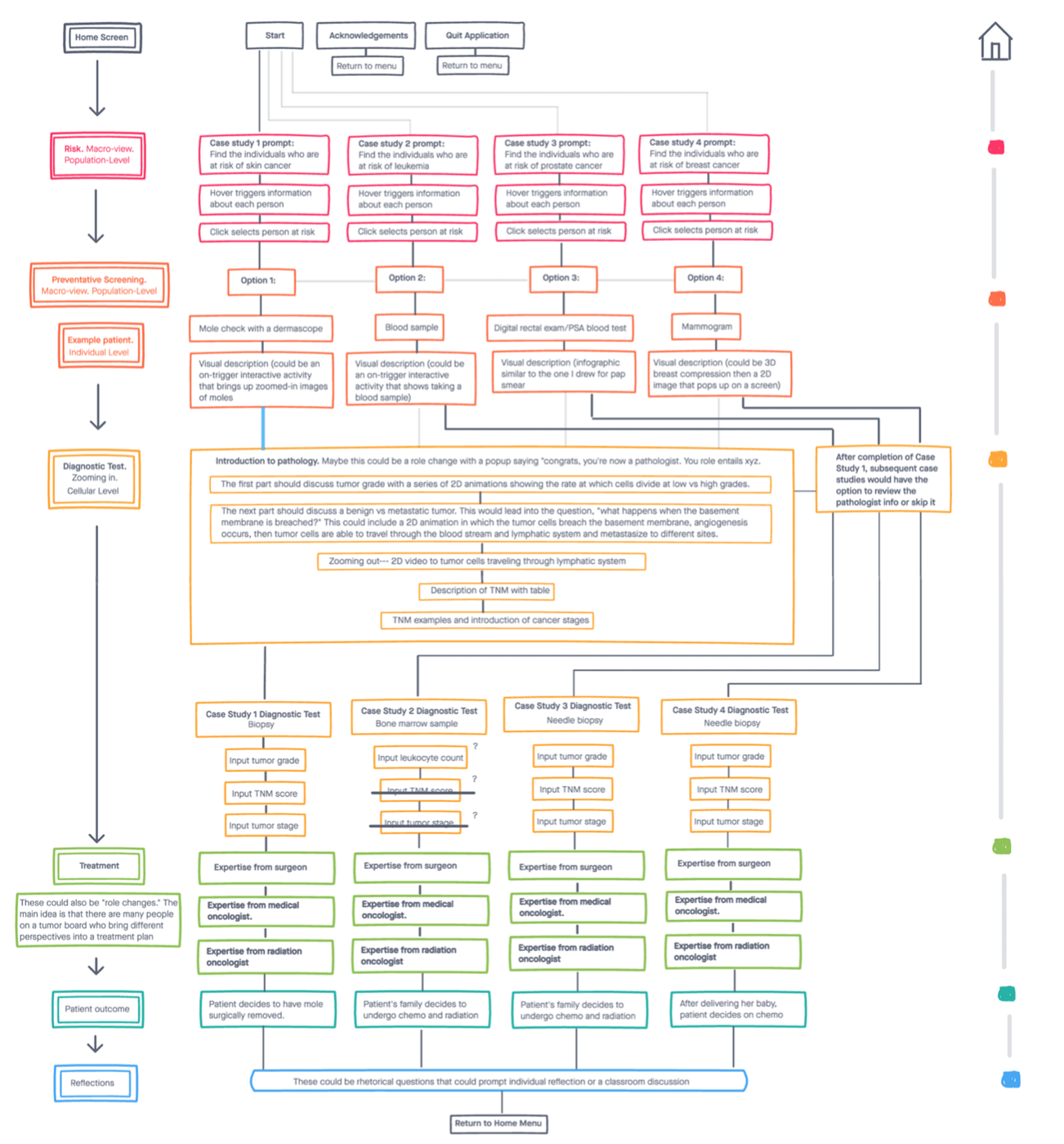
Background
This activity provides an interactive learning experience in which high school students may explore cancer biology concepts with the assistance of 2D and 3D graphics to enforce understanding. It was created as a supplement to Tufts University School of Medicine’s “Great Diseases” free health curriculum. It was created using InVision, 3DsMax, Unity, Adobe Illustrator, Adobe Photoshop, and One Note.
Step 1: Concept Map
To organize my ideas prior to the development of this activity, I created a concept map in InVision. The original format included suggestions for interactive features and connections between pages of the application.
Step 2: User Interface and Graphics
I designed the UI to be minimalistic and intuitive. The menu serves as both navigation and a progress tracker through the activity. Every scene includes graphics to aid in the visualization of challenging science, maintain engagement, and connect macro and micro concepts.
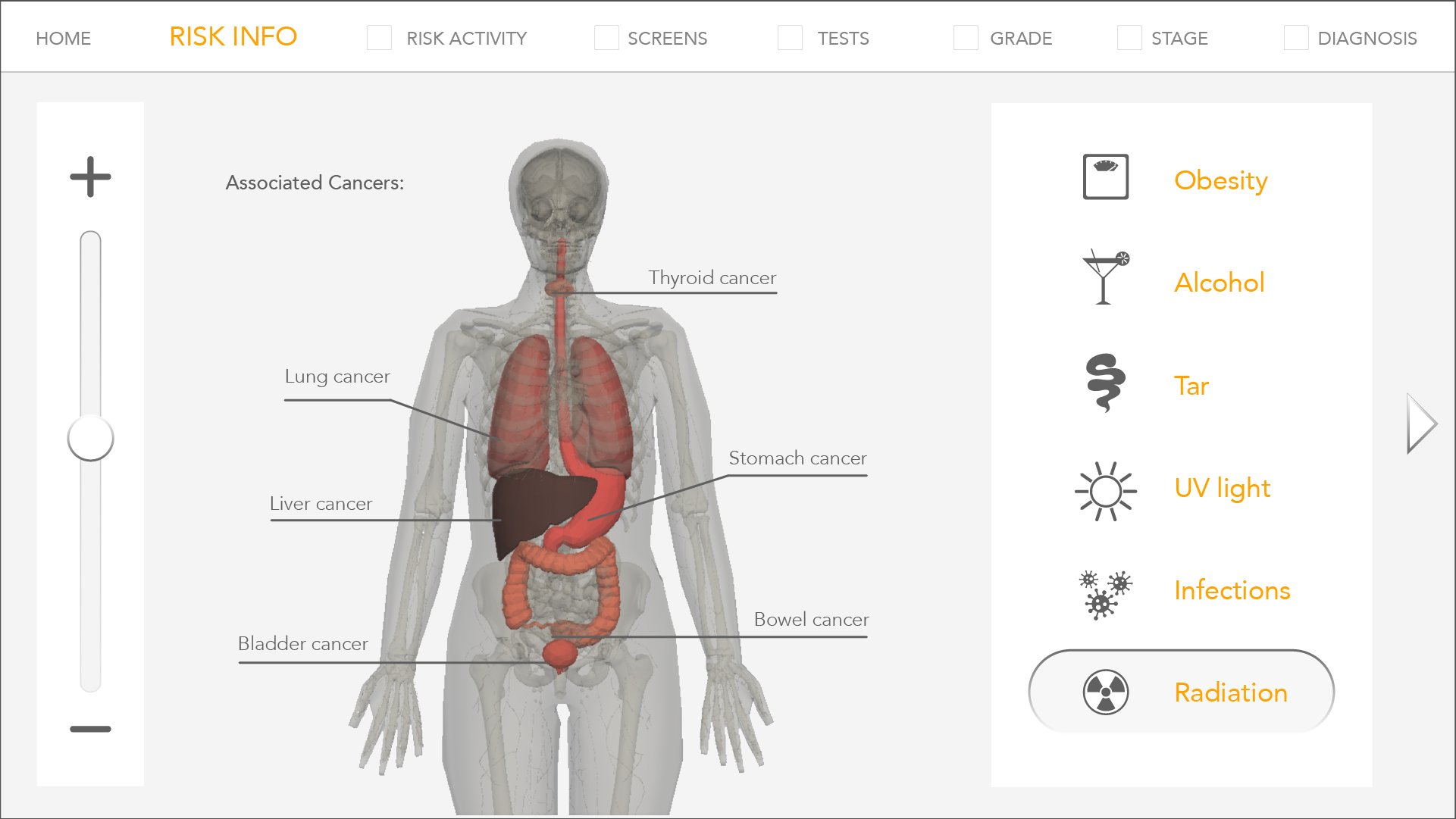
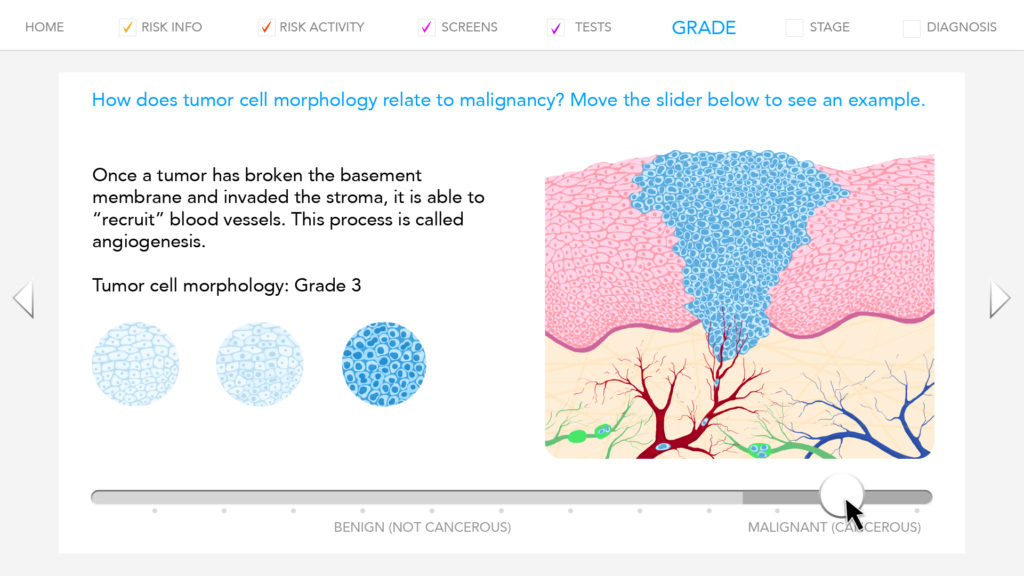
Step 3: Interactivity
I used Unity, a gaming software, to create a multitude of interactions throughout the simulation. Some of these include draggable sliders and clickable buttons to unveil additional information. For more complex interactions, such as the rotation of a 3D model in space, I wrote code in One Note and attached the C# scripts to specific objects.
Final Product
The final project was exported via Web GL and uploaded to a free site to be accessed by science teachers. Eight high school science teachers provided feedback regarding the clarity of content, usability of the user interface, and the simulation’s potential to keep their students engaged. Their suggestions are currently being integrated into a future iteration of this project.
